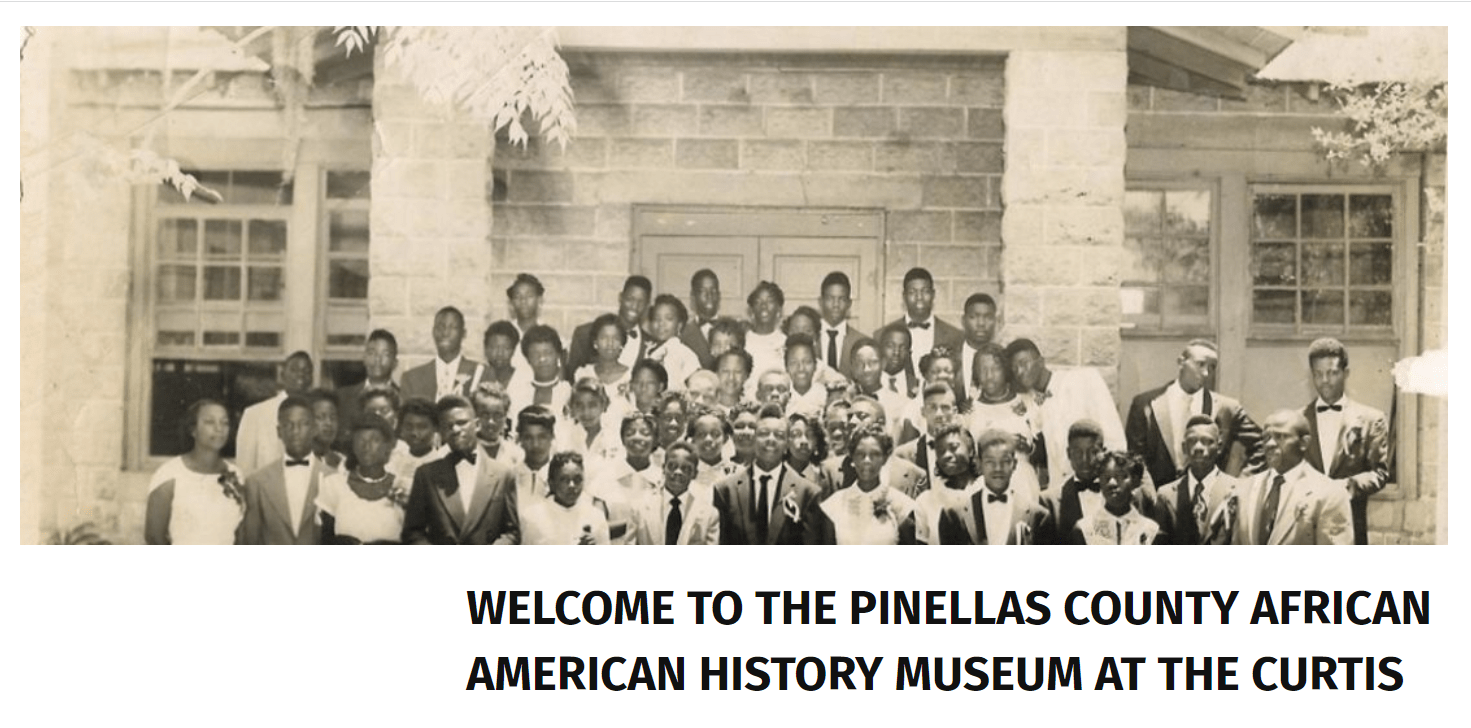By Jake-ann Jones
Living Legends and Lives
of African Americans in Entertainment (1850-1970)
. . .
Through March 1
Pinellas County African
American History Museum
Details here
. . .
The Pinellas County African American History Museum at The Curtis (PCAAHM) in Clearwater serves as a repository of historical and cultural information and physical artifacts relating and of interest to African Americans in Florida. The museum is located in the former segregation-era school for Black children, Curtis Elementary School, and is named for renowned educator S.W. Curtis.
Currently on exhibit through March 1 at the museum is Living Legends and Lives of African Americans in Entertainment (1850-1970), a collection on loan from historian and avid collector Willis Hakim Jones of Savannah GA.
This is the second Willis Hakim Jones exhibit that PCAAHM acquired, notes the museum’s co-founder and director Sandra Rooks. “We had already acquired his exhibit on the Gullah Geechee culture in 2019 – his wide collection of artifacts are even included in the National Museum of African American History and Culture,” she shares.
PCAAHM was able to acquire the exhibit as part of Florida African American Heritage Preservation Network (FAAHPN), a professional museum and historical preservation association with over 40 museums throughout the state. The network’s mission is to promote the preservation of African American landmarks and legacies and to assist statewide museums in discovering, archiving and illuminating African American contributions and experiences, while serving as a public resource through tourism and education.
The network helps find exhibits like this one, and supports the costs incurred in the laborious and costly packing and transfer of artifacts, art and research materials.
. . .

. . .
Rooks co-founded the museum with Dr. Randy Lightfoot, who explained that the Living Legends exhibit examines the important contribution early African American entertainers and entrepreneurs were able to make even in the face of racism, opposition and few resources.
“The exhibit shows how we were able to overcome – and, in spite of all the things that the performers had to go through, they did quality work. And after they did their quality work, of course, the larger companies came in and bought them out, and they were the ones that made the big profits,” Lightfoot relays.
An example of this was shared by Willis Hakim Jones during the talk he presented virtually for the opening at PCAAHM/Curtis Museum. Jones describes Black Swan Records, which was started by a Black man named Harry Pace in 1921 in Harlem, New York.
While Black Swan was the label that actually released the 1921 Ethel Waters hit “Down Home Blues,” the cost of recording and distribution was too much for the Black-owned record company. Once white record companies such as Paramount and Columbia got in the Black music business, with their large resources and connections, Black Swan was forced out of business within only two years, selling its catalogue to Paramount.
. . .
. . .
PCAAHM also has their ongoing Jim Crow exhibit open for viewing. Dr. Lightfoot comments on the significance of investigating Jim Crow and its impact today in light of the ongoing revelation of the mistreatment and disregard of African American graveyards such as those recently uncovered in Clearwater.
“Jim Crow has to do with the laws that segregated the society during that particular time period in American history. I think that’s important because right now we’re dealing with the thing about the graves. Because of Jim Crow and all the things that happened under Jim Crow, that lack of respect translated into what they did as far as our graves were concerned. If you don’t even respect people’s resting place, that’s in line with what they were doing to our communities during the Jim Crow period.”
He also notes that in Florida, like many other southern states, the remnants of Jim Crow can still be felt – but instead of racial segregation, today there is economic and class segregation impacting Black and Brown people.
. . .

. . .
The museum’s Jim Crow exhibit puts on display artifacts that some might find offensive, including posters and art depicting ‘pickaninnies’ and Black caricatures and an actual KKK robe – but Rooks says she feels like it’s important to acknowledge the history of America found in those objects rather than ignore or deny them.
“History has a tendency to repeat itself,” Rooks asserts, noting that becoming too lax, denying, or disregarding historical truths is dangerous. “Look at what they’re trying to do now – take away our voting rights.” For her, continuing to share the truth of America’s past is integral to protecting not only Black freedom, but the democracy of our future.
. . .
The Curtis Museum is located at 1101 Marshall Street, Clearwater FL 33755. Parking and entrance is on Grant Street.
The current exhibitions can be viewed when the museum is open on Tuesdays, Thursday and Saturdays 10 am — 2 pm, or on Fridays by appointment.
. . .
Originally published in The Weekly Challenger





